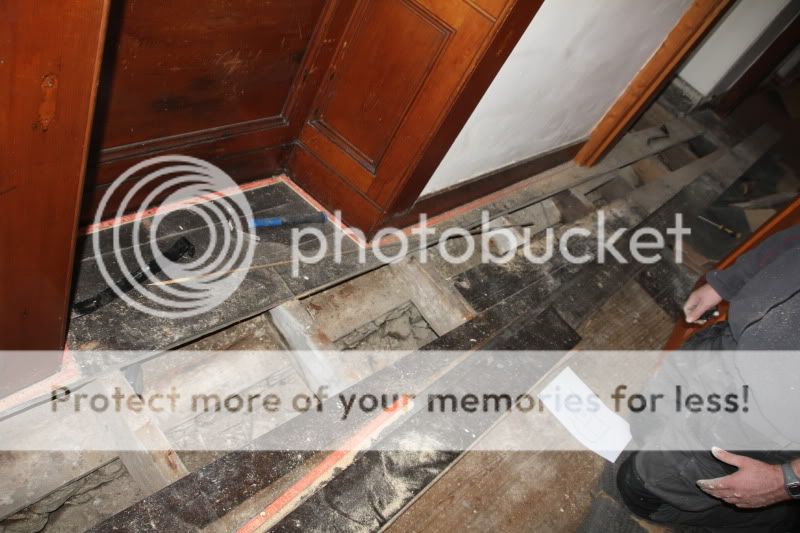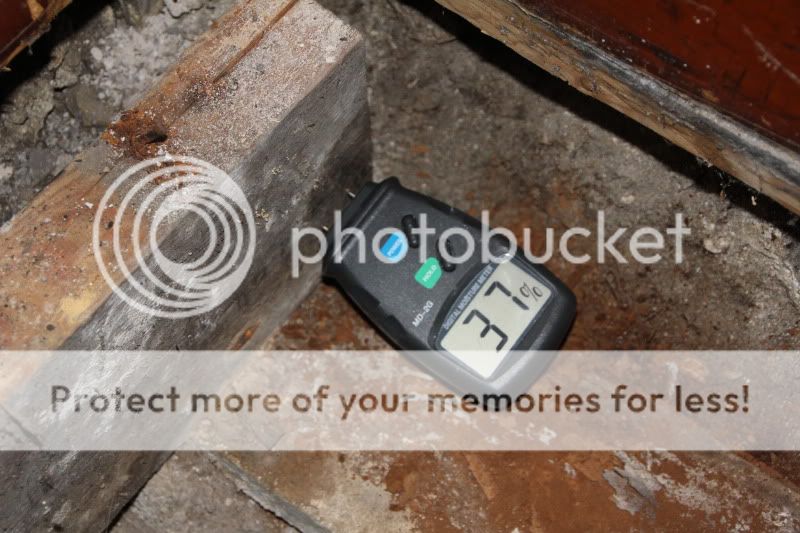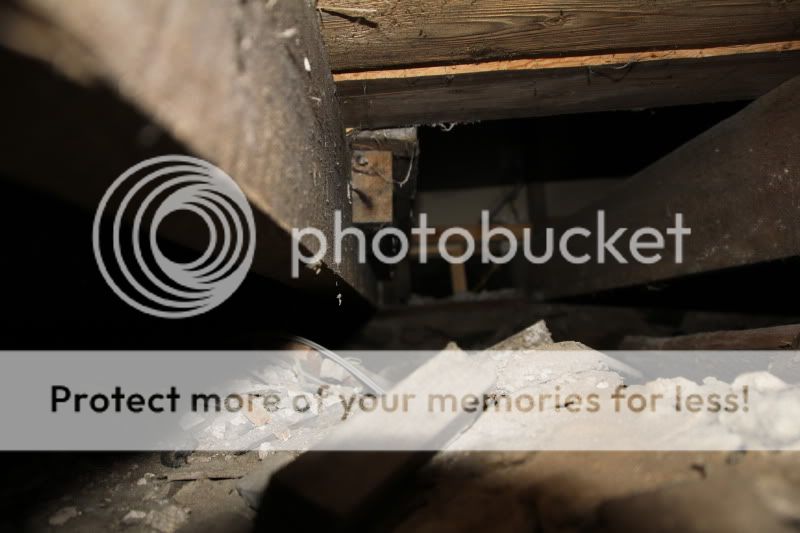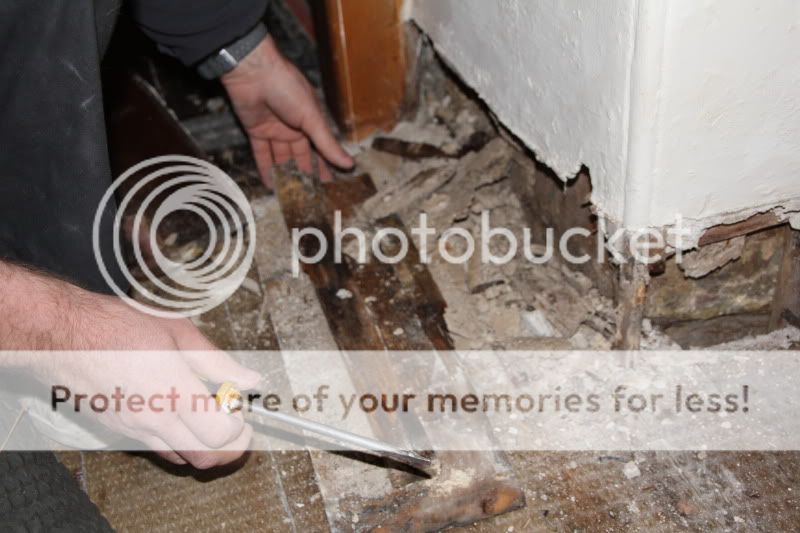We are looking at buying an old cottage built around 1825.
The home report showed excessive damp readings along the front and dividing walls.
We were advised to have a checmical DPC installed at skirting level as there was no access beneath the floors, and the internal and external ground level is the same (it is).
The skirting level bit didnt sit well with us, so we went up yesterday and lifted a section of the floor. See Pics


The joists are supported on a wooden sill that is placed on a layer of rubble that looks to be cemented together (or whatever they used in 1825).
We expected that they may have been into the wall, so this was actually a bit of good news in a strange way.
Obviously no DPM so the Sills are now totally saturated and rotten. Joists themselves are just affected at the ends. Readings of 39% but not appearing rotten.
The solum itself does not appear sealed.

So.......we plan on lifiting the floorboards, replacing the joists and replacing the sills.
Question being.......best plan of attack?
Stick to the same method but place a dpm underneath the new sills, or, change for a more modern approach?
I am wondering if the lack of any vapour barrier on the solum could be leading to moisture finding its way up onto the walls resulting in the damp issues seen there.
Getting readings up to 39% on the Lathe and Plaster which is just ready to fall off.

Should we aim to seal the solum at all?
We did also notice that the drains for the gutters externally are totally silted up which wont be helping. Air bricks are also partially blocked.

So...I guess we are questioning the merit of the checmical DPC. In our eyes that masks the symptoms but doesnt deal with the cause. Surely sealing the solum and improving the drainage will be a better use of the money?
Thanks in advance!
The home report showed excessive damp readings along the front and dividing walls.
We were advised to have a checmical DPC installed at skirting level as there was no access beneath the floors, and the internal and external ground level is the same (it is).
The skirting level bit didnt sit well with us, so we went up yesterday and lifted a section of the floor. See Pics


The joists are supported on a wooden sill that is placed on a layer of rubble that looks to be cemented together (or whatever they used in 1825).
We expected that they may have been into the wall, so this was actually a bit of good news in a strange way.
Obviously no DPM so the Sills are now totally saturated and rotten. Joists themselves are just affected at the ends. Readings of 39% but not appearing rotten.
The solum itself does not appear sealed.

So.......we plan on lifiting the floorboards, replacing the joists and replacing the sills.
Question being.......best plan of attack?
Stick to the same method but place a dpm underneath the new sills, or, change for a more modern approach?
I am wondering if the lack of any vapour barrier on the solum could be leading to moisture finding its way up onto the walls resulting in the damp issues seen there.
Getting readings up to 39% on the Lathe and Plaster which is just ready to fall off.

Should we aim to seal the solum at all?
We did also notice that the drains for the gutters externally are totally silted up which wont be helping. Air bricks are also partially blocked.

So...I guess we are questioning the merit of the checmical DPC. In our eyes that masks the symptoms but doesnt deal with the cause. Surely sealing the solum and improving the drainage will be a better use of the money?
Thanks in advance!


